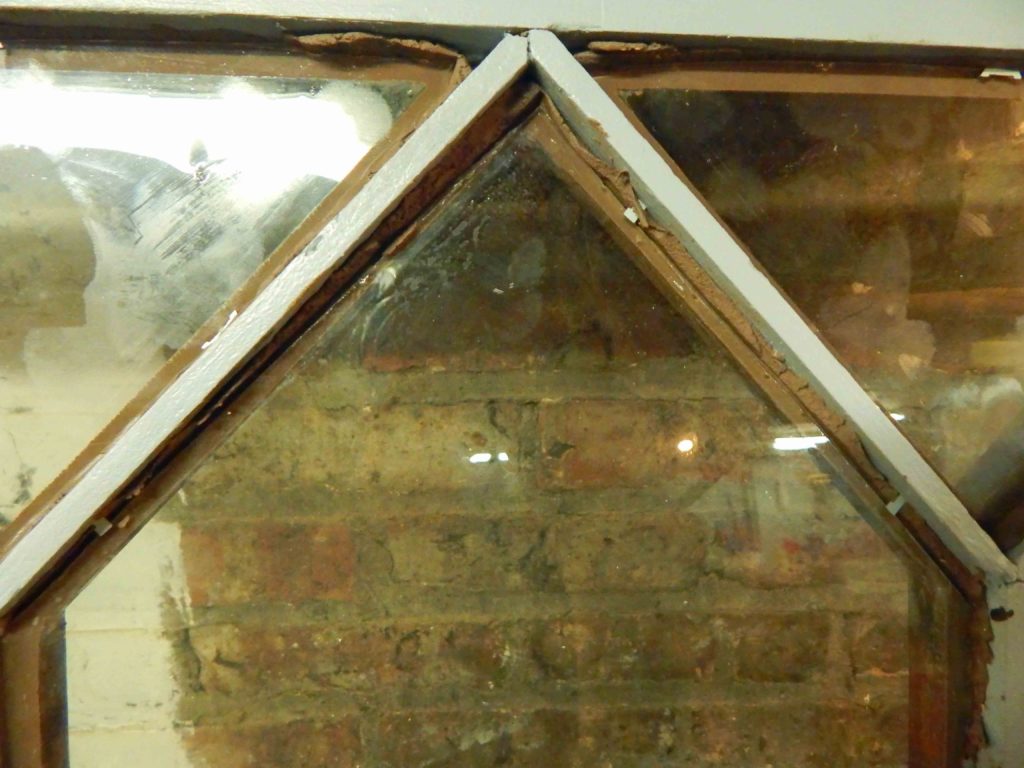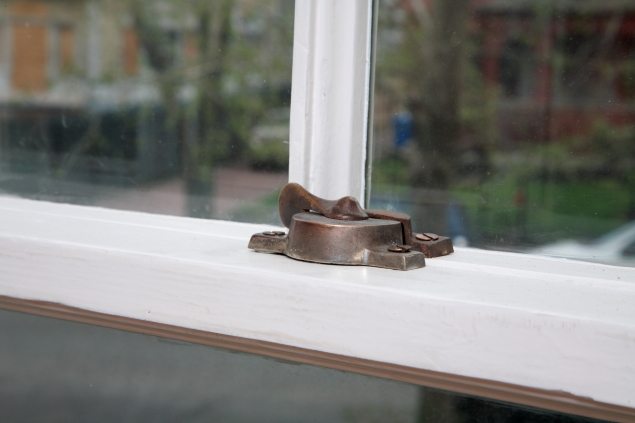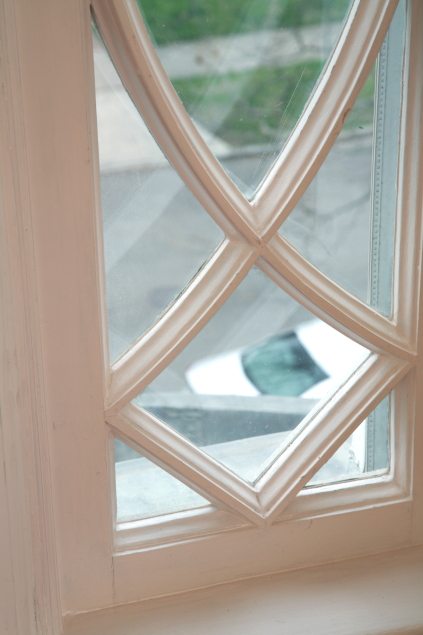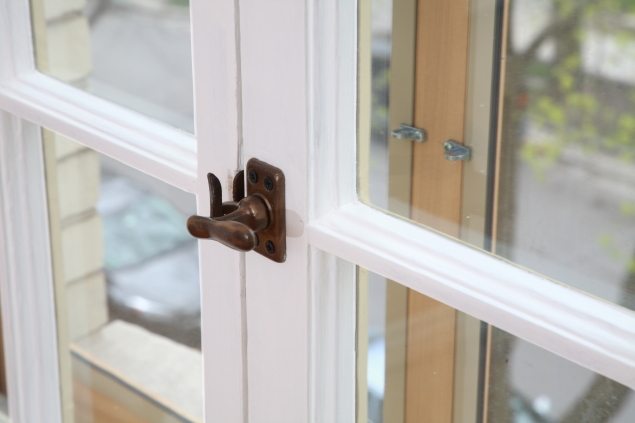Bedding, De-Glazing, and Re-glazing Sashes
A description of a small sequence of tasks will suffice to demonstrate how an integrative approach to the functional restoration of windows simplifies complexities while simultaneously contributing to aesthetic restoration.

As this picture shows, we use steam to deglaze sashes.
Why? Because this is the safest way to preserve vintage, “wavy” glass while removing dried glazing compound. Typically, we place them in a steam box. But the complexity of these windows were such that hand-steaming was also required.
The sash is then stripped to bare wood. It is inspected to determine what repairs need to be done, ranging from re-gluing of mortise-and-tenon joints to replacing of whole stiles or rails.


Here’s a sash that obviously needs attention. After the loose rotted wood has been excavated, the remaining soft wood is saturated with a wood hardening, liquid epoxy. The re-hardened cavity is then filled with a paste epoxy and sanded smooth. The degraded muntins are repaired with scarf (or “dutchman’s”) repairs.
Here is the repaired sash. The next step is to apply a primer coat. In this case, the interior side of the sash will receive a stain coat and enough coats of varnish to achieve full saturation. So only the exterior side of the sash is primed. Importantly, though, the rabbet in which the glass sits is also primed. Why is this surface primed, since it is covered with glass and glazing compound and is never exposed to the elements? Because the primer forms a barrier between the glazing compound and the window frame. This prevents the oil in the glaze from soaking into the wood, thus leading to premature drying of the glaze, substantially reducing the effective life of the glaze.


The next procedure is called “bedding the glass.” Before the glass is laid into the rabbet, a layer of glazing compound is tooled into the rabbet. The glass is then pushed down into this glaze and pinned tight with glazing points. This creates a gasket-like seal of the glaze against the sash frame, as can be seen in the picture below. While this may seem like a small detail, one must remember that it is being performed around the entire perimeter of each piece of glass, thus making a substantial contribution to resisting moisture and air infiltration.
Here is a picture of the exterior side of the whole sash that has been primed and the glass bedded and fixed in place with glazing points.


Perhaps you noticed that the glaze used to bed the glass in the sash pictured above is tinted brown. When the interior side of the sash is to receive a natural finish, this glaze line on the interior side of the sash is visible. In such cases, we tint the glaze so that it blends with the interior finish. Had we left this glaze in its natural putty color, there would have been an unsightly white line around each piece of glass. As this picture demonstrates (see the thin glaze line inside the white highlighting box), tinting the glaze similar to the stain color makes it almost invisible.
After being properly bedded and pinned with glazing points, the sash is now ready to be glazed.


Here is the sash after it has been glazed completely.
The sash is then painted. Importantly, the paint line should extend beyond the edge of the glaze by 1/32 of an inch so as to completely seal the glaze from exposure to air and to further insulate the glass. On the interior side, the clear finish will be similarly extended 1/32 of an inch onto the glass to similarly seal the interior side of the bedded glass. Here is the exterior side of a casement window from this same project. It has been painted according to these same exacting standards.

Here’s what one client has said about this level of attention to detail: Oak Brothers “…attention to detail and precision in their workmanship is more than we were hoping for. For example, they hand applied the glazing compound and painted it and it precisely matches the reveal of the wood on the inside. The paint overlaps the glazing by about 1/32″ of the glaze and is consistent all around. It’s a remarkable level of precision for work done by hand. ” Read the entire testimonial here.
These complex procedures, then, get integrated to form a simple, clean line. In the case of the interior side of the stained and clear finsihed sash pictured above, tinting the glaze makes it virtually invisible, producing that “snap to attention” appearance that looks both neat and “sharp.”
In the case of a painted window, such as these sashes pictured below, the bedding fills the gap between the wood and the glass. Once the sash is painted, all that complexity disappears! All you see is the simple elegance of an expertly painted sash that also happens to be well-insulated! This is the marriage of functional and aesthetic attention to detail that reduces complexity to simple elegance!



